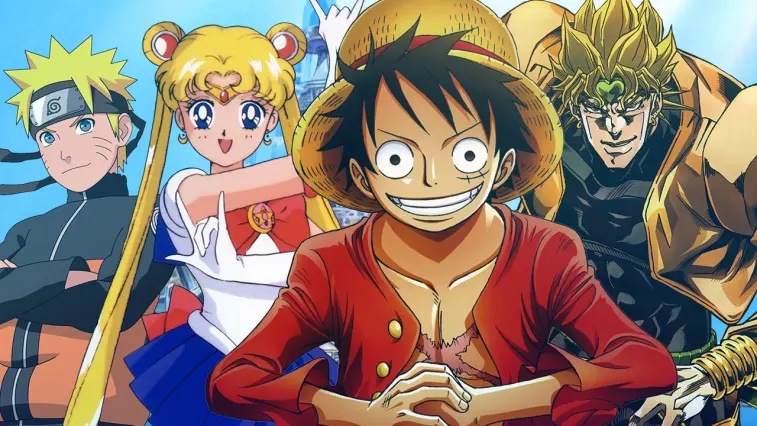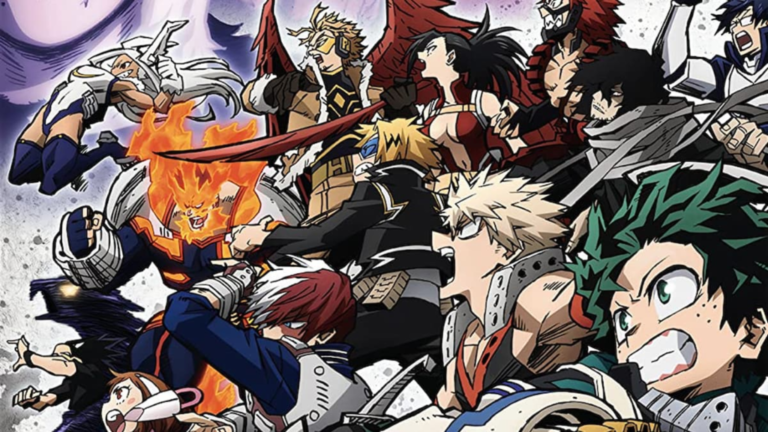Japanese anime, a global phenomenon, continues to capture the hearts of fans with its unique storytelling, stunning visuals, and diverse range of genres. With roots deeply embedded in Japanese culture, anime has grown from a niche interest to a worldwide community that unites millions of people. Whether you’re a seasoned otaku, a casual viewer, or someone curious about this art form, this blog will take you on an insightful journey through the rich world of anime.
We’ll cover its history, popular genres, top titles, the cultural impact of anime, and why it resonates so deeply with fans across the globe. Plus, we’ll answer some of the most commonly asked questions about Japanese anime to give you a comprehensive guide.
What is Anime?
Anime refers to animated works originating from Japan, encompassing both television series and films. Known for its captivating art style and emotional depth, anime comes in a multitude of genres—romance, action, fantasy, sci-fi, and even slice-of-life—ensuring something for everyone. Unlike Western animation often targeted toward children, anime caters to audiences of all ages, tackling mature themes and complex narratives.
A Brief History of Japanese Anime
Anime’s roots trace back to the early 20th century. Here’s a timeline highlighting its evolution:
| Year | Milestone |
|---|---|
| 1917 | The earliest known Japanese animated films, such as Namakura Gatana and Katsudō Shashin, were created, marking the birth of anime. |
| The first Japanese animated film, Namakura Gatana, was created. |
| 1960s |
| Astro Boy by Osamu Tezuka revolutionized the anime industry and introduced modern animation. |
| 1988 |
| Akira gained global acclaim, introducing anime to international audiences. |
| 1990s-2000s |
| Series like Dragon Ball Z, Naruto, and One Piece dominated global pop culture. |
| Present Day | Streaming platforms like Crunchyroll and Netflix are making anime accessible worldwide. |
The result? A thriving global fandom that keeps growing every year.
Table of Contents
Popular Anime Genres (and Must-Watch Recommendations)
Anime enthusiasts know there’s something for everyone within its vast genres. Here are the most popular categories with iconic recommendations to get started:
1. Action and Adventure
These anime are filled with intense battles, epic journeys, and riveting storytelling.
Must-watch titles:
- Attack on Titan
- One Piece
- Naruto
2. Slice of Life
Focused on everyday experiences, these anime showcase heartwarming (and often comedic) moments.
Must-watch titles:
- Clannad
- March Comes in Like a Lion
3. Sci-Fi and Fantasy
Think futuristic worlds, innovative technology, and magical realms.
Must-watch titles:
- Steins;Gate
- Sword Art Online
- Fullmetal Alchemist: Brotherhood
4. Romance
Anime often portrays love in beautifully emotional and impactful ways.
Must-watch titles:
- Your Lie in April
- Toradora
5. Horror and Thriller
For fans of darker storylines that keep you on the edge of your seat.
Must-watch titles:
- Tokyo Ghoul
- Death Note
The Cultural Impact of Anime
The influence of anime goes far beyond entertainment—it shapes trends, creates subcultures, and boosts industries.
1. Global Popularity
Anime conventions, cosplay events, and online communities demonstrate its massive international fanbase. Events like Anime Expo and Comiket attract millions, showing the cultural shift anime has brought about worldwide.
2. Cosplay Culture
Cosplay, short for “costume play,” is a beloved hobby where fans dress as their favorite characters. From conventions to competitions, cosplay has grown into an industry in itself.
3. Economic Contributions
The global anime market was valued at approximately $28.61 billion in 2022 and is expected to grow even further. Streaming platforms, merchandise sales, and licensing deals all contribute to this burgeoning economy.

Why Does Anime Resonate With Fans Worldwide?
- Unique Storytelling
Anime has the ability to weave gripping narratives that leave a lasting impact. Fans often form deep emotional connections with characters and storylines.
- Relatability
Whether it’s a coming-of-age story or an epic quest, anime touches on universal themes of love, loss, and perseverance.
- Artistic Excellence
The beautiful and intricate animation styles capture visual storytelling in a way that transcends language.
FAQs About Japanese Anime
1. What is the difference between anime and cartoons?
Anime originates from Japan and often caters to diverse audiences across all age groups. Western cartoons are usually geared toward children and have a different animation style.
2. What’s the best way to watch anime?
There are several platforms like Crunchyroll, Funimation, Hulu, and Netflix offering both subbed (original Japanese audio with subtitles) and dubbed (English voiceovers) versions.
3. Is there an anime for beginners?
Yes! Beginners can start with classics like My Hero Academia, Naruto, or Your Name. These are highly rated and accessible for newcomers.
4. How do fans participate in the anime community?
Fans engage through conventions, cosplay events, fan art, online forums, and anime viewing parties with friends.
5. Can anime teach you about Japanese culture?
Absolutely! From food and festivals to traditional values, anime often incorporates elements of Japanese culture, offering a glimpse into its rich traditions.
Taking Your Anime Fandom Further
Exploring anime isn’t just about watching—it’s about becoming part of a global community that celebrates creativity, storytelling, and passion. Whether you’re a viewer of classics like Dragon Ball Z or discovering hidden gems on streaming platforms, the world of Japanese anime offers something special for everyone.
Dive into your next anime adventure today, and don’t forget to connect with fellow fans to share recommendations, theories, and memes. Anime isn’t just a genre; it’s a lifelong journey.
